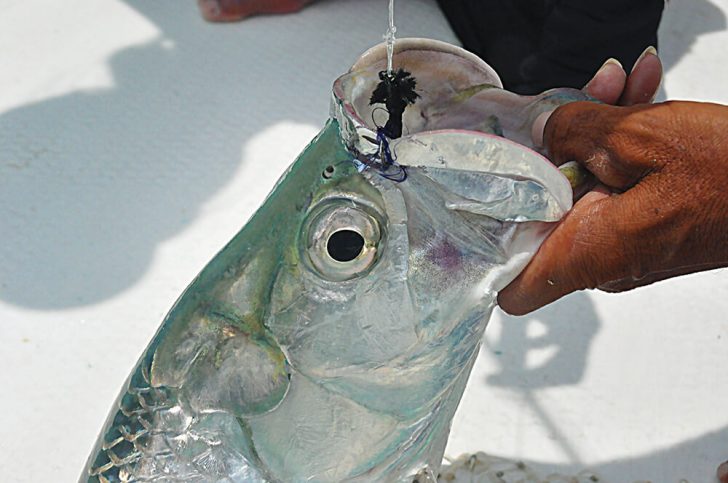It’s tarpon time! Many of you will be headed to tarpon waters this summer looking to hook one of ocean’s greatest gamefish on the fly. When you go, consider altering your fly retrieval technique from the standard one-hand strip to the two-handed strip. If you do, you might be surprised at how effective a two-hand strip can be at catching this great gamefish.
There are some saltwater fish that react to a fly that is stripped as fast as possible. Tuna, barracuda, roosterfish, amberjack, and yellowtail are all good examples. These guys prefer a fly that moves like an Indianapolis race car. If the fly isn’t imitating a fleeing baitfish, and suddenly stops, this group of gamers will turn and swim away.
The two-handed strip is also a wonderful technique for feeding a well-presented fly to a tarpon. But there is a difference. The two-handed strip is slightly different for tarpon than it is for offshore and nearshore species. Where offshore fish like tuna want the fly to burn through the water without pause, a tarpon often wants to see the fly move through the water at a slower pace while still keeping the fly’s continual motion.
An advantage of the two hand strip technique is the angler has total control of the fly’s pace through the water, making it possible for the angler to speed up or slow down the fly depending on the reaction of the tarpon to the fly. For example, if a tarpon reacts aggressively toward the fly, the angler might speed up the retrieve to initiate a strike. If the tarpon’s reaction is less aggressive, almost passive, the angler can manipulate the fly’s speed and try to turn on the tarpon’s “light switch” to instigate a strike.
Another advantage to using the two-hand retrieve is that the rod is placed under the arm rather than in the hands, making it almost impossible to lift the rod tip on a strike. This combats the urge of freshwater converts to set the hook by lifting the rod, a big no-no in tarpon fishing. With the rod under and arm, the only way to hook the fish is with a solid strip-strike.
For a successful two-handed strip do the following:
- After the fly has been cast, place the rod under the arm (right or left).
- Point the rod tip down, keeping the tip on the water at all times.
- Begin the strip by pulling the fly line with your hand at the first stripping guide. Repeat this with the other hand.
- There should be a continual motion, changing hands with each strip.
- Vary the speed of the fly as you strip it through the water.
- Strip the fly all the way to the boat and repeat. If you feel a strike, give your line a solid strip-strike.
Use the two-handed strip, and I guarantee you will never go back to the one-hand strip again. Good luck on the tarpon grounds this season!
